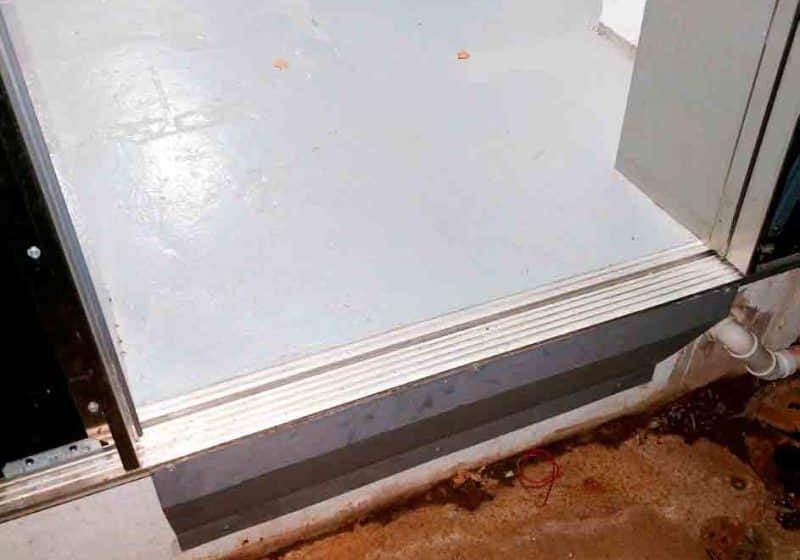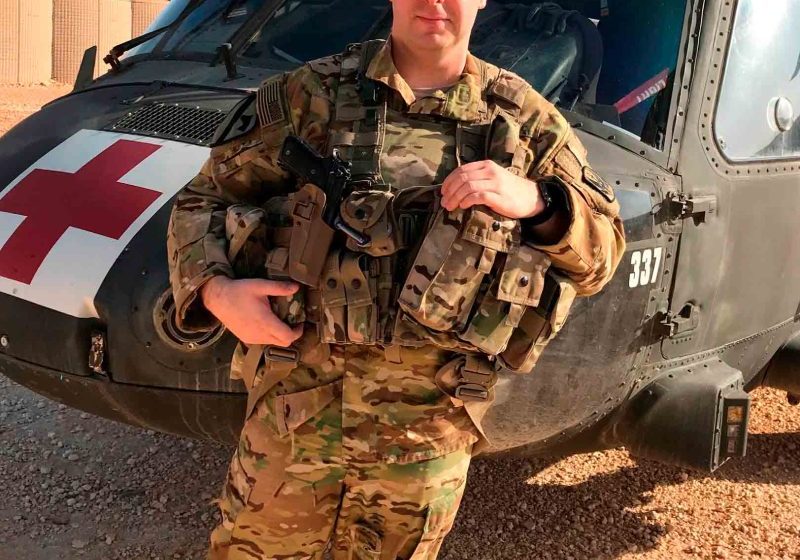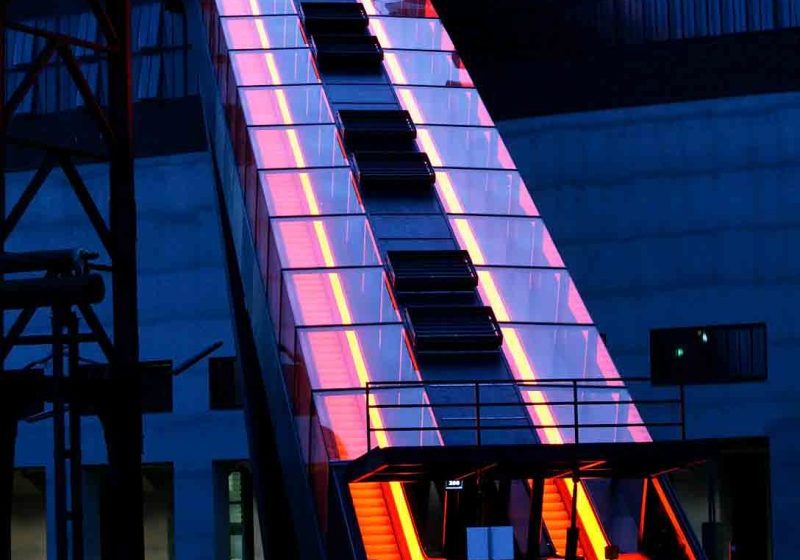More than Meets the Eye
May 1, 2018

In this Industry Dialogue, product-certification specialist Azaad Santoe talks about his developing a guideline for heavy-duty escalators.
by Koos van Lindenberg
Escalators and moving walks quickly transport a great number of people. Where safety is concerned, they are built to EN 115-1. However, operating conditions can vary greatly. That is why Liftinstituut has outlined reliability and lifespan requirements in a manufacturing guideline developed by product-certification specialist Azaad Santoe. He says the guideline is an excellent basis for the tender specification for high-traffic escalators that operate under severe conditions, i.e., heavy-duty escalators. These include escalators at metro and train stations, as well as airports, where extreme load patterns occur at certain times.
Santoe travels all over the world to certify lifts and their safety components. Escalators, moving walks and their associated safety components also fall under his remit of certification. Santoe spent 23 years performing safety inspections in the field and has worked for the Rotterdam, Netherlands, public-transportation company, RET. He has overseen product certification of lifts, safety components and machines for the past eight years for Liftinstituut. Here, he talks to your author, also of Liftinstituut, about the guideline for heavy-duty escalators.
KVL: Tell me about what you do and what you learned at RET.
AS: I inspect the lifts and escalators, both at the commissioning stage and periodically each year. This has given me a good appreciation of wear-and-tear patterns of escalators under heavy-use conditions. I have also learned a lot from my communications with clients about their experiences. The mechanics have taught me a lot about how to carry out effective maintenance and about maintenance periods for small and major maintenance tasks, all aimed at preventing stoppages due to malfunctions and also preventing damage caused by defects by performing timely replacements.
KVL: How did the term “heavy duty” come about, and what exactly does it mean?
AS: In the past, there was no heavy-duty qualification for escalators. These days, however, “heavy duty” is readily used as an additional specification for escalators/moving walks that operate under severe conditions, without there being any clarity as to what this specification actually involves. When the subject is brought up, I usually ask, “What do you mean by ‘heavy duty?’” Try and define it first. When you look it up on Google, you will come across an infinite number of definitions. Each manufacturer of escalators has its own heavy-duty escalator, based on its own characteristics and experiences from the market and on its own specialty. It appears difficult for clients to put onto paper how they would like a “heavy-duty” escalator to be designed, so, the escalator, once installed, does not always turn out to meet their requirements.
KVL: How did the manufacturing guideline come about, and what is its purpose?
AS: Based on communications with clients and manufacturers and my own findings and expertise, I drew up a guideline for heavy-duty escalators on behalf of Liftinstituut, which may help achieve more standardization for this type of installation. In this context, I have also looked into the quality of accompanying components, such as treads, chains and motors.
KVL: What does the guideline cover?
AS: It covers all the elements of the heavy-duty escalator that may sustain heavy loads, including associated specifications. The frame of the escalator, for example, must be so strong that it will not sag under a certain load. When you look at the EN 115-1 standard, the load is dependent on the width of the stairs. Then, you can ask, “Is that sufficient?” But, if you are dealing with “heavy duty,” there is more involved. Durability and corrosion-resistance aspects are described, too. Other aspects are how heavy the drive system needs to be, and what noise level is acceptable. This guideline also covers the manner in which the motor needs to be protected against vibration and the manner in which the drive system must be mounted onto the foundation. Another question answered by the guideline is how the driveshaft must be aligned.
KVL: Does the guideline cover treads and chains?
AS: All loose parts are discussed. An escalator is often seen as one component by the layman, but it actually has many individual components. Each component is built from different components, and each must be sufficiently strong and hardwearing. Take an escalator tread. A tread must not only be strong and robust, but also hardwearing and sufficiently slip resistant.
Various tests have been carried out on these aspects, and specifications are based on the test results. The tread rolls are subjected to a durability test, as are the watertight and lubrication-free bearings used. This is just an example, but it indicates that there is a lot involved when correctly describing the characteristics of the various components of heavy-duty escalators.
KVL: What about maintenance instructions and timeframes?
AS: In this guideline, I have requirements in addition to the maintenance manual. The necessary maintenance must be described in detail by the manufacturer. As an example, there is adjustment of a handrail. For the mechanic, it is important to know what to do and what to look out for. There should also be some type of troubleshooting document, which is often missing from maintenance manuals. When opening this document, the mechanic should be able to see — preferably, in pictures — what the solutions may be for certain problems. The manufacturing guideline, since it contains both manufacturing and maintenance requirements, is a ‘cradle-to-grave’ document that accompanies the escalator throughout its lifespan.
KVL: What are the main principles of the guideline?
AS: Visibly moving parts must last for at least 10 years. This may seem quite short for an escalator, but we are talking about installations that are in constant use, 24/7, throughout the entire year, bearing one-and-a-half times the nominal load. We also bear in mind the load cycle of an escalator. During peak times, the load will be close to 100%. Outside of peak times, the load will be a lot lower: for example, 20%. But there are also periods in between, when the load will be around 80%. These figures are processed in a load-cycle calculation pattern, which will determine the ultimate choice of components.
KVL: How is the guideline a “living document”?
AS: It is available now, but as technology changes, we will keep updating the text, continuously incorporating progressive insights. As such, some adaptations as listed in the new EN 115-1 standard for escalators regarding earthquake resistance have already been incorporated. Also, all new technologies brought forward by manufacturers are permanently monitored, and, if necessary, I will change the guideline’s contents accordingly.
KVL: Escalator inspections carried out by Liftinstituut are based on the EN 115-1 standard. Can Liftinstituut also carry out inspections on heavy-duty escalators based on the Liftinstituut manufacturing directive?
AS: It is indeed possible, but an inspection like this can only be done by people within Liftinstituut who have enough specific knowledge of these escalators. Partly, we can determine matters based on the prototype of these escalators, but we also use test reports produced by the manufacturer.
KVL: For whom is the guideline intended?
AS: Primarily clients, i.e., the future owners of the heavy-duty escalators or moving walks. The guideline is extremely suitable for forming part of the tender specification, but manufacturers can also benefit from it. And, let’s not forget the consultant, who is often hired as an intermediary by the architect or future owner to support the call for tender. Apart from consultants, manufacturers are showing an interest, as well. They want to be prepared for specifications for heavy-duty escalators, since they are now finding their way into the market, thanks in part to the Liftinstituut guideline.
KVL: Were any other industry professionals involved?
AS: This task would not have been possible without the help and invaluable contribution of fellow product specialist Roy Bahadoer and the Liftinstituut regional manager in Turkey, Süleyman Özcan.
Get more of Elevator World. Sign up for our free e-newsletter.








